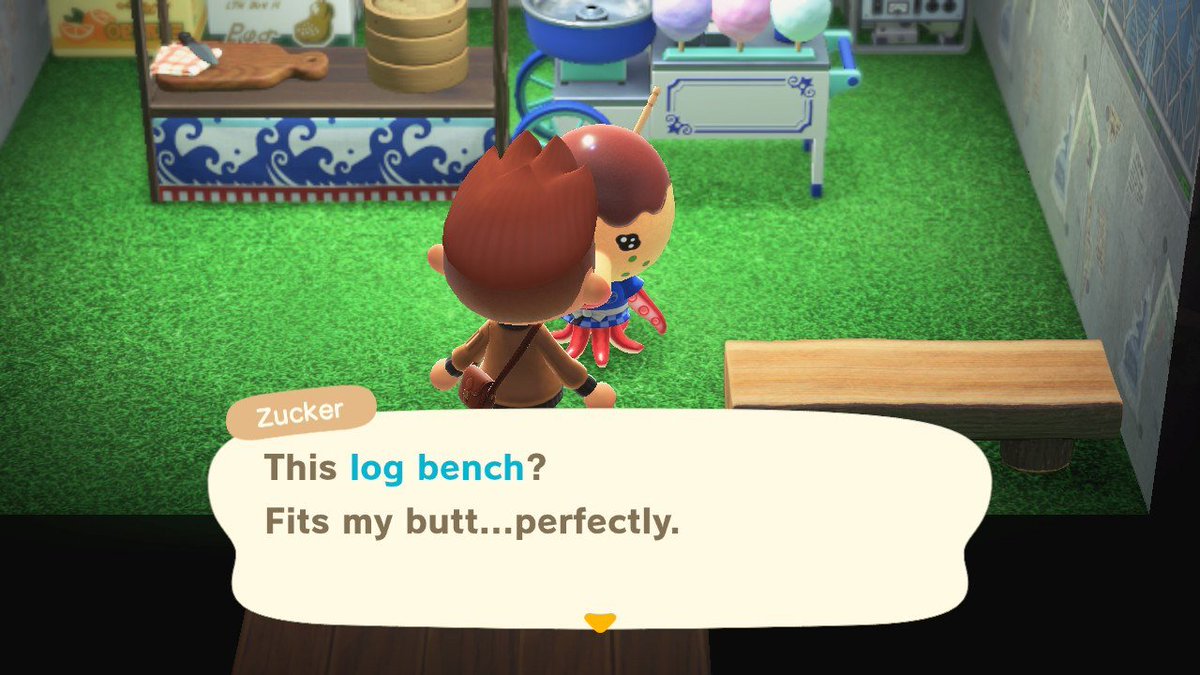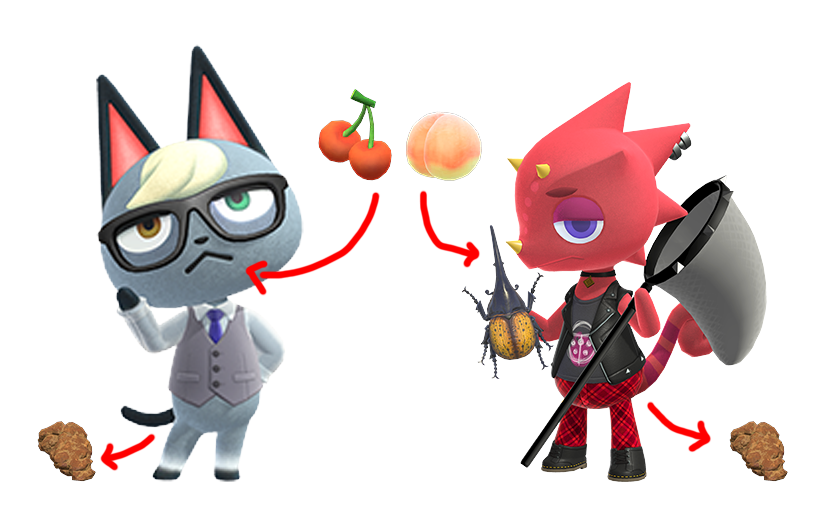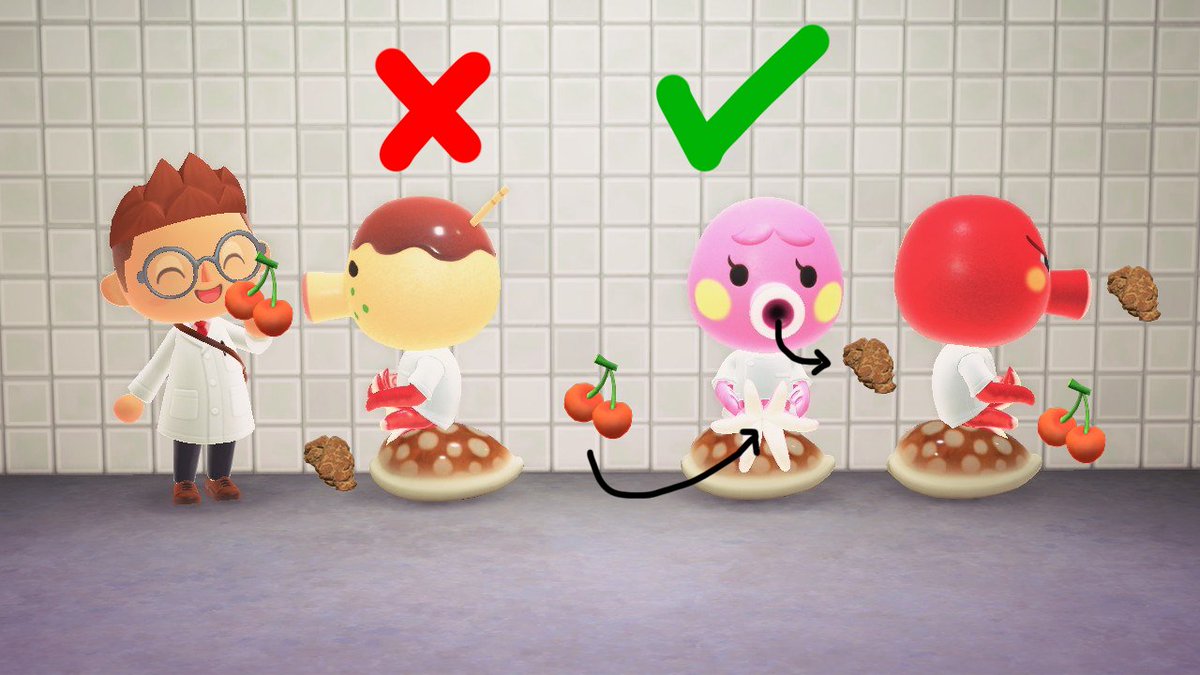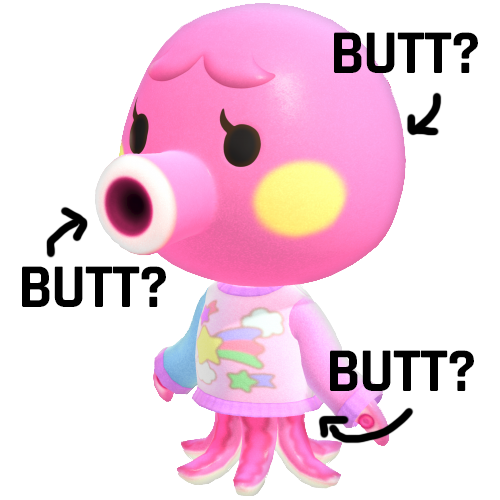OK this dialogue from Zucker the octopus makes me think a lot about invertebrate butts so here& #39;s an #ACNH  https://abs.twimg.com/hashflags... draggable="false" alt=""> / #InverteButt crossover thread.
https://abs.twimg.com/hashflags... draggable="false" alt=""> / #InverteButt crossover thread.
First, we define the butt. According to @MerriamWebster, butt, or buttock, is "the back of a hip that forms one of the fleshy parts on which a person sits".
I, personally, find this definition is problematic.
I, personally, find this definition is problematic.
Many familiar animals like cats and dogs don& #39;t sit like we do, but we know where the butt is — the flesh around the butthole. So clearly, the butthole is the key.
However, with invertebrates, the butthole isn& #39;t always where you think it is.
However, with invertebrates, the butthole isn& #39;t always where you think it is.
To orient ourselves here are 2 familiar animals & their buttholes& #39; location.
On the left is Raymond, overpriced meme cat, a vertebrate. On the right is Flick, arthropod artiste, internet darling, also a vertebrate.
For them, food goes in one hole, poop goes out the other. Easy.
On the left is Raymond, overpriced meme cat, a vertebrate. On the right is Flick, arthropod artiste, internet darling, also a vertebrate.
For them, food goes in one hole, poop goes out the other. Easy.
Now we see Zucker, Marina, and Octavian. The ONLY THREE invertebrates out of 400+ villagers. Blasphemy.
This is how they sit. Obviously, we can see where their butts are? LOL NO.
This is how they sit. Obviously, we can see where their butts are? LOL NO.
An octopus& #39; mouth is actually tucked between its appendages – technically called arms.
That & #39;mouth& #39; hole? That& #39;s where the poop comes out. It& #39;s called a siphon. In human terms, I guess we can call that the butthole.
That & #39;mouth& #39; hole? That& #39;s where the poop comes out. It& #39;s called a siphon. In human terms, I guess we can call that the butthole.
So now we see that the & #39;sitting& #39; part and the & #39;butthole& #39; part don& #39;t align. Obviously, real-life cephalopods don& #39;t sit like this.
But this raises an issue, where is an octopus& #39; butt? Is it the butthole, or the round part near the butthole? What even are butts?
But this raises an issue, where is an octopus& #39; butt? Is it the butthole, or the round part near the butthole? What even are butts?
In the words of Dr @MaureenBug, invertebutt enthusiast: "Bones are limiting, bones are boring."
Only when we leave behind our attraction to bony animals, we can start asking the real important questions like these.
Viva la #InverteButt.
Only when we leave behind our attraction to bony animals, we can start asking the real important questions like these.
Viva la #InverteButt.

 Read on Twitter
Read on Twitter / #InverteButt crossover thread." title="OK this dialogue from Zucker the octopus makes me think a lot about invertebrate butts so here& #39;s an #ACNH https://abs.twimg.com/hashflags... draggable="false" alt=""> / #InverteButt crossover thread.">
/ #InverteButt crossover thread." title="OK this dialogue from Zucker the octopus makes me think a lot about invertebrate butts so here& #39;s an #ACNH https://abs.twimg.com/hashflags... draggable="false" alt=""> / #InverteButt crossover thread.">
 / #InverteButt crossover thread." title="OK this dialogue from Zucker the octopus makes me think a lot about invertebrate butts so here& #39;s an #ACNH https://abs.twimg.com/hashflags... draggable="false" alt=""> / #InverteButt crossover thread.">
/ #InverteButt crossover thread." title="OK this dialogue from Zucker the octopus makes me think a lot about invertebrate butts so here& #39;s an #ACNH https://abs.twimg.com/hashflags... draggable="false" alt=""> / #InverteButt crossover thread.">






